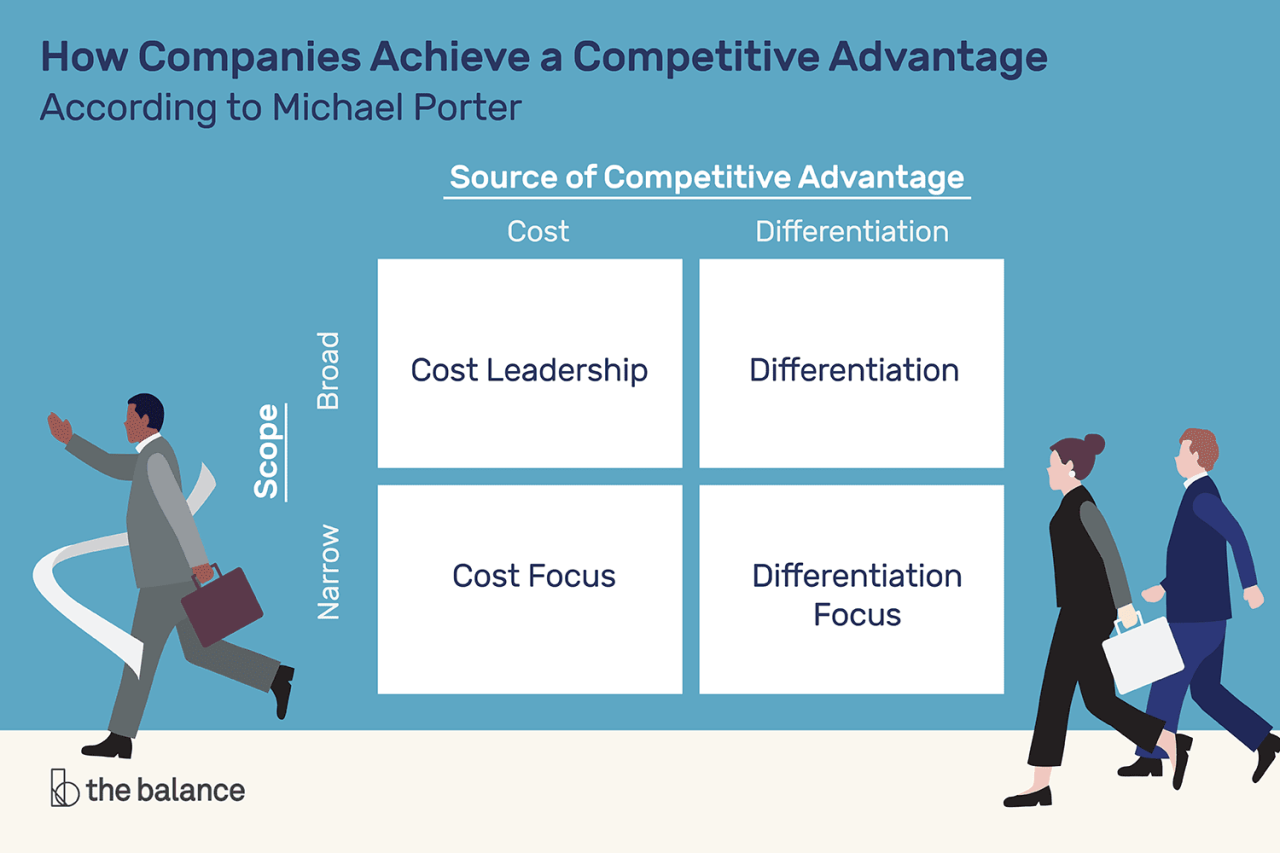Successful Business Exit Strategies
Successful business exit strategies are the cornerstone of a successful entrepreneurial journey. They provide a roadmap for business owners to maximize the value of their hard work and ensure a smooth transition out of their business. This comprehensive guide will delve into the intricacies of business exit strategies, empowering you with the knowledge and tools to navigate this critical phase with confidence.
Overview of Successful Business Exit Strategies
Exiting a business is a significant event that requires careful planning and preparation. Successful business exit strategies involve defining and implementing a clear plan to transition ownership or control of a business, ensuring a smooth and profitable outcome for all parties involved.
Various types of business exit strategies exist, each with its own advantages and disadvantages. Understanding these options and selecting the most appropriate strategy is crucial for achieving the desired outcomes.
Importance of Planning and Preparation
Planning and preparation are essential for a successful business exit. It involves assessing the business’s value, identifying potential buyers or successors, and developing a strategy that aligns with the owner’s financial and personal goals. Proper planning allows for a smooth transition, minimizes disruptions, and maximizes the value of the business.
Methods for Evaluating Business Value
Evaluating the value of a business is a crucial step in planning an exit strategy. It helps you determine the potential proceeds and make informed decisions about the best exit options. There are several common valuation methods, each with its strengths and weaknesses. Understanding these methods and how to apply them is essential for successful business exit planning.
Financial Data Analysis
Financial data provides valuable insights into a business’s financial health and performance. Key financial ratios, such as revenue growth, profitability, and debt-to-equity ratio, can be used to assess the business’s financial strength and stability. Financial statements, including the balance sheet, income statement, and cash flow statement, provide a comprehensive view of the business’s financial position and operations.
Comparable Company Analysis
This method compares the business to similar companies in the same industry. By analyzing the valuation multiples of comparable companies, you can estimate the value of your business. The key is to identify companies that are truly comparable in terms of size, industry, growth potential, and financial performance.
Discounted Cash Flow (DCF) Analysis
DCF analysis involves forecasting future cash flows and then discounting them back to the present value using a specified discount rate. This method is often used to value businesses with predictable cash flows. The discount rate reflects the time value of money and the risk associated with the business.
Strategies for Maximizing Business Value

Maximizing business value is a critical aspect of ensuring a successful exit. By implementing strategies that increase profitability, improve operational efficiency, and enhance customer loyalty, businesses can position themselves for a more favorable valuation and a smoother transition during the exit process.
Increasing Business Profitability
Enhancing profitability is essential for increasing business value. Consider the following strategies:
- Increase revenue: Explore new markets, launch new products or services, and optimize pricing strategies to generate additional income.
- Reduce expenses: Analyze operating costs, identify areas for optimization, and negotiate better terms with suppliers and vendors.
- Improve margins: Focus on increasing the difference between revenue and expenses by optimizing production processes, reducing waste, and improving efficiency.
Improving Operational Efficiency
Operational efficiency directly impacts profitability and business value. Consider the following strategies:
- Streamline processes: Analyze existing workflows, identify bottlenecks, and implement automation or other solutions to improve efficiency.
- Optimize inventory management: Implement inventory management systems to minimize waste, reduce holding costs, and improve cash flow.
- Enhance technology: Leverage technology to automate tasks, improve communication, and gain insights into business operations.
Enhancing Customer Loyalty and Brand Reputation
Building a loyal customer base and a strong brand reputation can significantly enhance business value. Consider the following strategies:
- Provide exceptional customer service: Go above and beyond to meet customer needs, resolve issues promptly, and build lasting relationships.
- Develop a strong brand identity: Create a memorable brand name, logo, and messaging that resonates with your target audience.
- Foster customer engagement: Engage with customers through social media, email marketing, and other channels to build a community and drive loyalty.
Preparing for the Exit Process
A well-prepared exit strategy can help you achieve your financial goals and ensure a smooth transition for your business. Here are some key steps to consider:
Creating a timeline for the exit process will help you stay on track and avoid surprises. Identify the key milestones you need to achieve, such as preparing your business for sale, finding a buyer, and negotiating the terms of the sale. Be realistic about the time it will take to complete each step, and allow for some flexibility in your timeline.
Identifying and Mitigating Potential Risks
There are a number of potential risks that can arise during the exit process. These include financial risks, legal risks, and operational risks. By identifying and mitigating these risks early on, you can help ensure a successful exit.
Designing a Communication Plan for Stakeholders
It is important to keep all stakeholders informed throughout the exit process. This includes employees, customers, suppliers, and investors. Develop a communication plan that Artikels how you will communicate with each group, and what information you will share. This will help to manage expectations and avoid surprises.
Exit Options and Considerations

Exiting a business is a significant milestone for any entrepreneur. Understanding the available exit options and their implications is crucial for maximizing value and ensuring a smooth transition.
Sale of the Business
Selling the business to a third party, such as another company, an investment firm, or a group of individuals, is a common exit strategy.
- Pros: Provides immediate liquidity, eliminates ongoing responsibilities, and allows for a clean break from the business.
- Cons: May not yield the highest possible value, can involve significant transaction costs, and requires the owner to relinquish control of the business.
Initial Public Offering (IPO)
An IPO involves selling shares of the business to the public through a stock exchange.
- Pros: Raises capital for growth, increases the company’s visibility, and provides liquidity for shareholders.
- Cons: Involves significant regulatory and disclosure requirements, can be time-consuming and expensive, and may result in reduced control for the founder.
Liquidation, Successful business exit strategies
Liquidation involves selling off the business’s assets and distributing the proceeds to shareholders.
- Pros: Provides a quick way to exit the business, can be tax-efficient in certain circumstances, and allows for the realization of asset value.
- Cons: May not yield the highest possible value, can damage the business’s reputation, and requires the closure of operations.
Role of Advisors and Legal Counsel
Engaging experienced advisors and legal counsel is essential for navigating the exit process effectively. They provide guidance on:
- Evaluating business value
- Negotiating terms
- Managing legal and tax implications
- Protecting the interests of all stakeholders
Examples of Successful Business Exits
Numerous businesses have successfully executed exit strategies, including:
- Microsoft: IPO in 1986, which made Bill Gates one of the world’s richest people.
- Google: IPO in 2004, raising over $1.6 billion and establishing the company as a tech giant.
- PayPal: Sold to eBay in 2002 for $1.5 billion, creating significant wealth for its founders.
Understanding exit options and considerations empowers entrepreneurs to make informed decisions that maximize value and ensure a successful transition when the time comes to exit their businesses.
FAQ Guide: Successful Business Exit Strategies
What is the importance of planning for a successful business exit?
Planning for a successful business exit is crucial because it allows business owners to maximize the value of their business, mitigate potential risks, and ensure a smooth transition. Proper planning enables them to make informed decisions, identify and address potential obstacles, and position their business for a successful exit.






